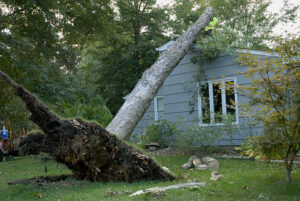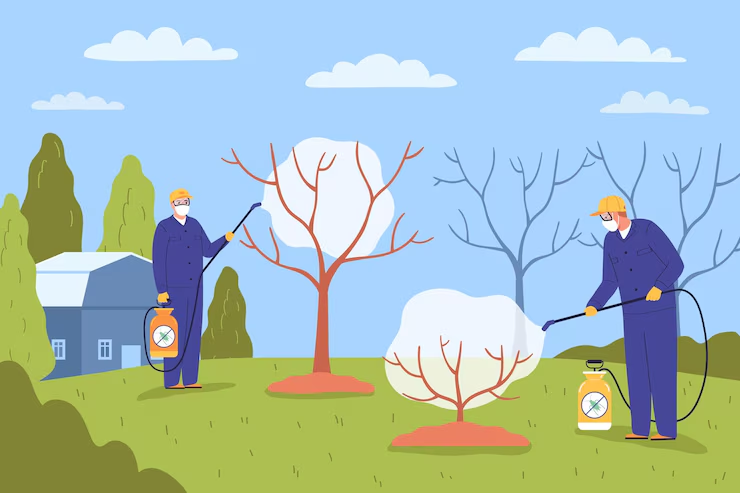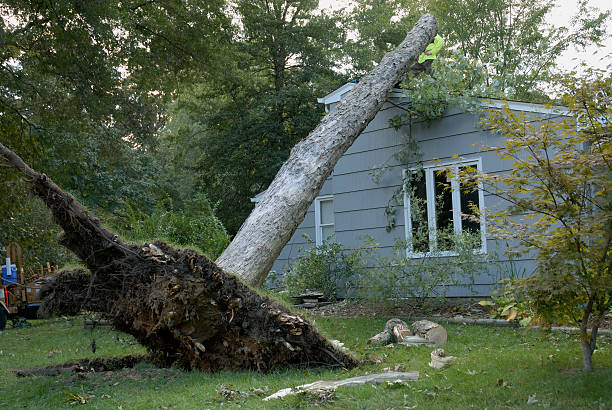Here’s the deal — if you’ve ever stared at your trees wondering why they look tired, wilted, or plain scraggly, you’re not alone. In Fort Worth’s crazy weather — drought one day, storms the next — you can’t wing it. You need to know what are the best pruning and watering practices to keep them healthy? I’m going to break this down for you. No fluff. No jargon. Just real advice that works.
Why pruning and watering even matter
Trees are like that reliable friend — strong, steady, and always there… until you ignore them for too long. Then? They start showing signs of stress.
Bad pruning = weak limbs, disease, and dangerous hazards.
Bad watering = root rot, pest invasions, and slow death.
Nail both, and your trees will reward you with shade, beauty, and property value.
Pruning practices that don’t mess around
1. Why prune?
- Cut out dead or diseased branches.
- Stop pests from turning your tree into a buffet.
- Open up airflow and sunlight.
- Encourage new, healthy growth.
- Shape it so it doesn’t look like a wild mess.
2. Best time to prune
- Late winter to early spring (January to March) — when the tree’s dormant. Easy to see what’s dead, and no new growth yet.
- Right after flowers fade — for spring bloomers.
- Light snips? Anytime.
- Heavy cuts? Skip late summer/fall — you’ll just invite frost damage.
3. How to prune like a pro
- Sharp, clean tools only.
- Start with the obvious dead stuff.
- Remove branches that rub or grow inward.
- Cut outside the branch collar — that thick bump where it meets the trunk.
- Never top trees. It makes them weak and ugly.
- Never remove more than 20–25% of the canopy. Over-pruning = stress city.
4. Safety first
- If it’s taller than you can reach safely or near power lines — call in a certified arborist.
- Bad cuts = long-term damage. Don’t risk it.
👉 Want expert pruning help in Fort Worth? Check out our tree trimming services here.
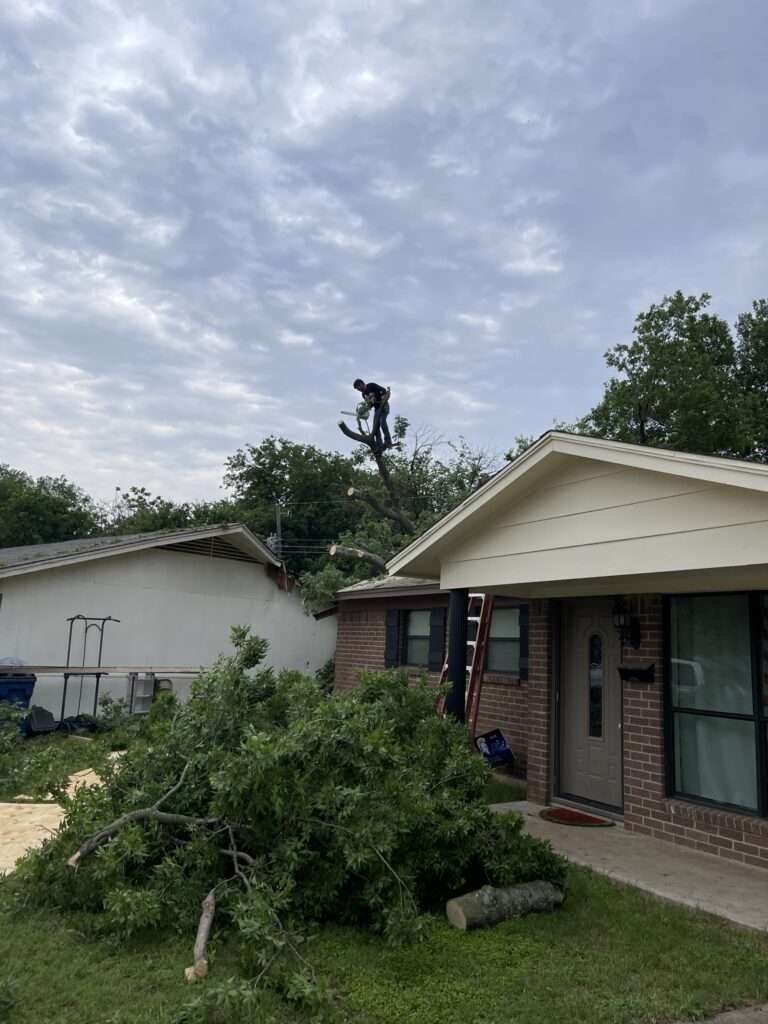
Watering practices that actually work
1. Why watering matters
Fort Worth heat will destroy trees that aren’t watered right. Roots need deep, slow drinks — not random splashes.
2. How much to water
- Newly planted (first year): 1–2 times per week, deep enough to soak 12–18 inches.
- Young trees (1–3 years): Once every 1–2 weeks.
- Established trees (3+ years): Every 3–4 weeks in dry spells.
3. Watering technique
- Hit the drip line — the ground under the edge of the canopy. That’s where roots are.
- Use a slow trickle (garden hose or soaker). 30 minutes per spot.
- Don’t blast the trunk.
4. Best time to water
- Early morning or late evening. Less evaporation. More absorption.
- Midday watering? Waste of water.
5. Don’t forget mulch
- 2–4 inches of mulch around the base (but not touching the trunk).
- Keeps moisture in, weeds out.
👉 Need pro watering advice or drought support? Contact us here.
Spotting watering problems before they wreck your tree
Signs of underwatering:
- Droopy, wilted, or curling leaves.
- Brown leaf edges.
- Dry, cracked soil.
- Leaves dropping too early.
Signs of overwatering:
- Yellow, limp leaves.
- Mushy roots or a sour smell.
- Fungal growth or mushrooms around the trunk.
- Stunted growth.
1. Quick Guide: When & How to Prune Your Trees in Fort Worth
Pruning isn’t just about looks — it keeps your trees healthy and strong. In Fort Worth, late winter or early spring is the best time to prune. Cut away dead or weak branches and shape the tree before new growth starts. Pro tip: Don’t overdo it! Less is more when it comes to pruning.
👉 Not sure where to start? Let Trophy Tree Co. handle the hard work — call us today for expert pruning!
2. How Much Water Do Your Trees Actually Need?
In Texas heat, trees need a good soak — but not every day. Deep watering once or twice a week helps roots grow deep and strong. Water early in the morning and make sure it soaks into the soil about 6 inches deep. Overwatering can be just as harmful as underwatering!
👉 Want us to check your tree health and watering setup? Contact Trophy Tree Co. for a professional assessment!
3. Signs Your Tree Might Need Professional Help
Look for dead limbs, cracked branches, or fungus growth around the trunk. If your tree leans suddenly or the leaves are dropping out of season, call a pro. At Trophy Tree Co., we help Fort Worth trees stay healthy and safe — reach out if you’re unsure!
👉 Spotted something worrying in your yard? Call Trophy Tree Co. — Fort Worth’s trusted tree care experts!
4. Common Tree Diseases in Fort Worth (And How to Spot Them)
Fort Worth’s climate can invite tree diseases like oak wilt, root rot, and powdery mildew. Watch for wilting leaves, unusual discoloration, or soft, spongy bark near the roots. The sooner you catch it, the easier it is to save the tree!
👉 If you’re not sure what’s affecting your tree, Trophy Tree Co. is here to help — book a tree health check today!
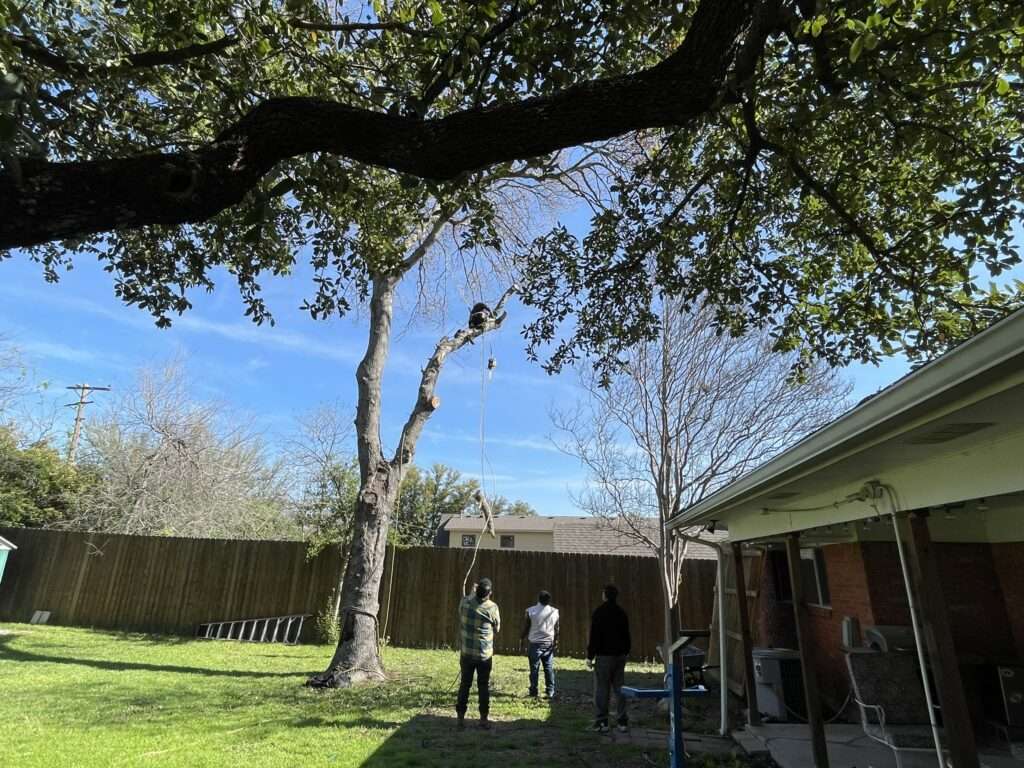
5. Why Tree Mulching Matters — and How to Do It Right
Mulching keeps moisture in, protects roots, and keeps weeds away. Use organic mulch 2-4 inches thick, but don’t pile it against the trunk — give your tree room to breathe. Your tree will thank you!
👉 Need help improving the soil and health of your landscape? Call Trophy Tree Co. for professional tree care in Fort Worth!
6. Storm Damage? Here’s What to Do for Your Trees
After strong storms, check for hanging branches, exposed roots, or split trunks. Don’t try to remove large limbs on your own — it’s dangerous and could cause more harm. Trophy Tree Co. provides emergency tree services to keep your property safe.
👉 If your tree took a hit from last night’s storm, call us — we’re on standby for emergency tree care in Fort Worth!
7. The Importance of Deep Root Fertilization for Trees in Fort Worth
North Texas soil can be tough on trees. Deep root fertilization helps deliver nutrients straight to the roots, encouraging healthy growth and resilience against drought and disease.
👉 Want to boost your tree’s health? Schedule deep root fertilization with Trophy Tree Co. today!
8. Are Your Trees Ready for Summer Heat?
The Texas heat can be brutal on trees. Proper pruning, watering schedules, and soil care can make all the difference. Don’t let your trees struggle this summer — proactive care is key!
👉 Get a professional tree care assessment from Trophy Tree Co. and keep your trees thriving all season long!
9. Why Tree Removal Shouldn’t Be a DIY Project
Removing a large tree isn’t just risky — it can damage your property and put your safety at risk. It requires proper equipment, experience, and careful planning.
👉 If you have a tree that needs to come down, call Trophy Tree Co. for safe, professional tree removal in Fort Worth!
Additional pro tips for tree health
- Keep lawnmowers and weed whackers away. They damage bark.
- Fertilize only when needed. Do a soil test first.
- In drought? Water deeper but less frequently.
- After storms? Check for broken branches and prune ASAP.
👉 Got storm damage? See our emergency tree services here.
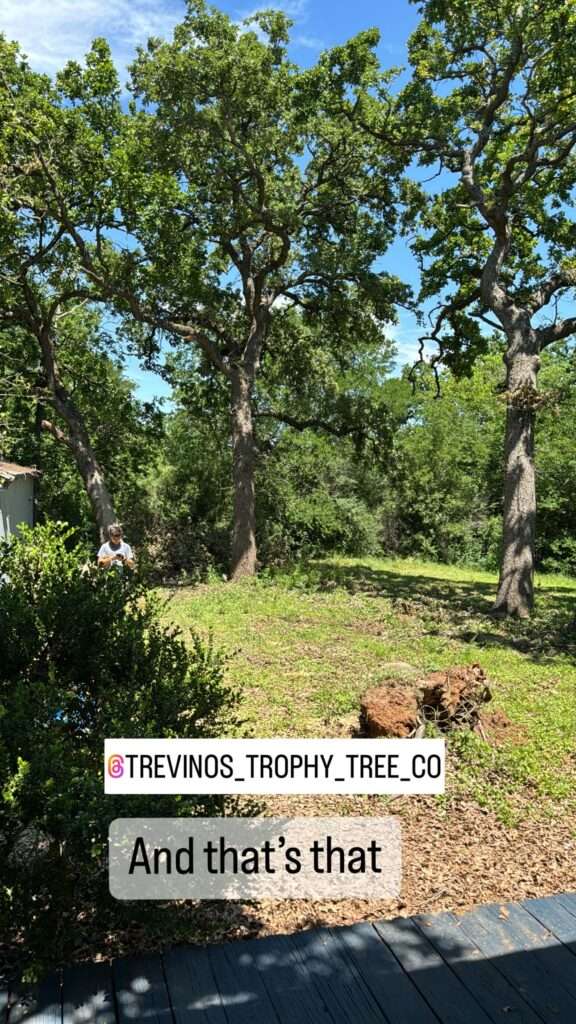
What trees actually thrive in Fort Worth?
If you’re planting new ones, do yourself a favour — go native.
- Cedar Elm: Tough, pest-resistant.
- Texas Red Oak: Beautiful colour, storm-hardy.
- Chinquapin Oak: Strong and reliable.
- Mexican Plum: Small but mighty.
- Eastern Redbud: Spring blossoms.
- Bald Cypress: Flood-tolerant.
- Desert Willow: Heat-loving, gorgeous flowers.
👉 Check out our full list of native, pest-resistant trees here.
1. The Hidden Dangers of Dead or Dying Trees on Your Property
Dead or dying trees might seem harmless, but they pose significant risks to your home, family, and property. In Fort Worth, where sudden storms and high winds are common, weak or dead branches can fall unexpectedly, causing property damage, injury, or even power outages. Additionally, decaying trees can become breeding grounds for pests such as termites, carpenter ants, and other wood-boring insects, which could eventually spread to your home.
Removing hazardous trees isn’t just about aesthetics; it’s about protecting your property and the people around it. At Trophy Tree Co., we have the equipment and expertise to assess the condition of your trees and safely remove those that are dangerous. We handle everything — from securing permits to stump grinding — leaving your yard clean and safe.
👉 If you suspect you have a dead or dangerous tree, don’t wait for an accident. Call Trophy Tree Co. today for a free tree health assessment!
2. How Professional Tree Pruning Enhances Your Property’s Value and Beauty
Tree pruning is more than trimming back branches — it’s an investment in the long-term health and beauty of your landscape. Well-pruned trees not only grow stronger and healthier but also enhance curb appeal and increase property value. In Fort Worth neighborhoods, well-maintained trees make homes stand out and add to the neighborhood’s overall aesthetic.
Professional pruning removes dead or diseased branches, prevents overcrowding, and allows better air circulation and sunlight to reach your trees and surrounding plants. It also shapes trees to grow away from power lines and structures, reducing the risk of storm damage. Attempting to prune trees yourself without the right knowledge can cause damage and lead to poor growth patterns.
👉 Schedule professional pruning with Trophy Tree Co. and let your trees thrive while making your home more beautiful and valuable!
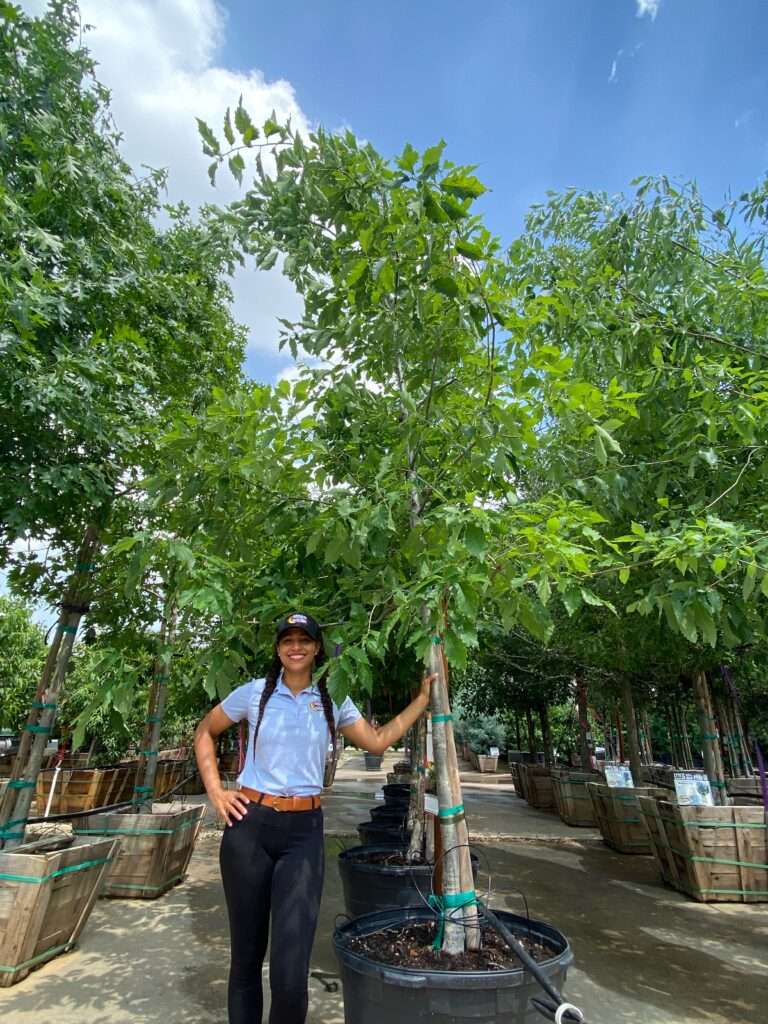
3. The Role of Certified Arborists in Tree Care — Why It Matters
When it comes to tree care, not all services are created equal. Hiring a certified arborist ensures you’re working with someone who has extensive training and knowledge in tree biology, proper pruning techniques, disease diagnosis, and safe removal practices. Certified arborists understand the specific challenges trees face in North Texas — from drought conditions to invasive pests.
At Trophy Tree Co., our certified arborists conduct thorough tree health evaluations, provide customized care plans, and ensure that every action taken benefits your tree’s health in the long term. Whether it’s diagnosing a fungal infection or deciding when a tree needs to be removed for safety reasons, having an expert makes all the difference.
👉 Trust the professionals. Contact Trophy Tree Co. and have a certified arborist care for your trees the right way!
FAQs
Q: Can I prune trees myself?
A: Small stuff, yes. Big jobs? Get an expert.
Q: How often should I water in winter?
A: Rarely, unless there’s a drought. Trees are dormant.
Q: Is topping trees really that bad?
A: Yes. It leads to weak limbs and shortens the tree’s lifespan.
Q: How do I know if my tree is stressed?
A: Yellow leaves, dieback, early leaf drop — all red flags.
Q: What mulch is best?
A: Organic mulch like wood chips or shredded bark.
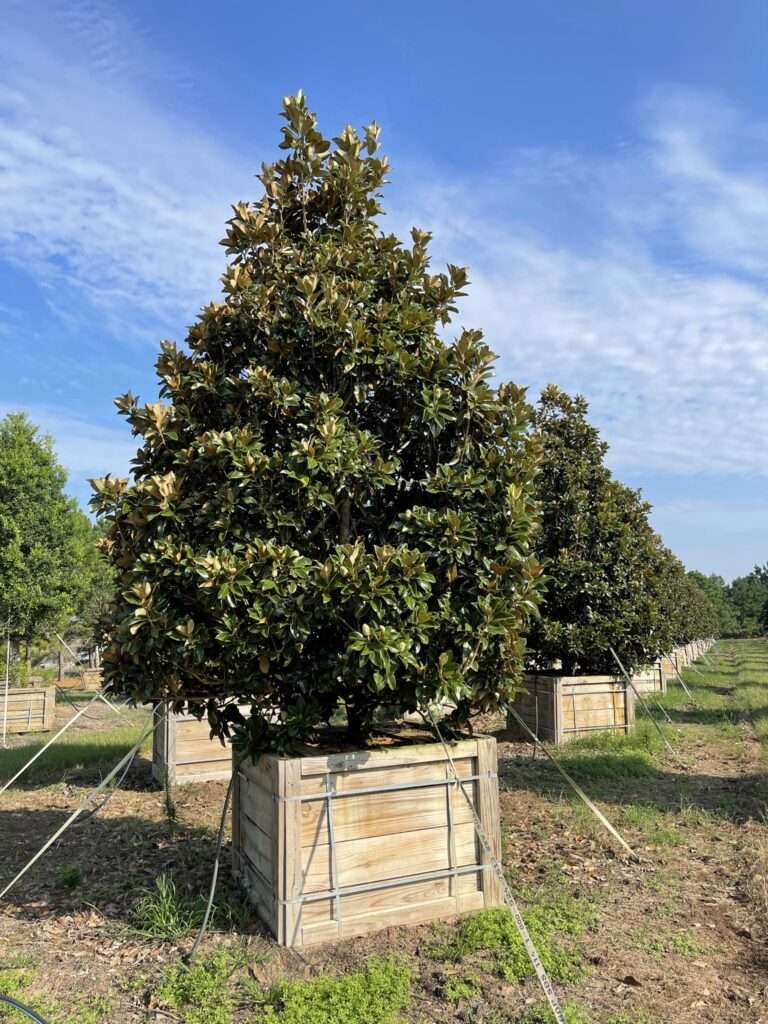
Wrap-up: What are the best pruning and watering practices to keep them healthy?
It’s simple but not always easy:
- Prune smart (late winter or after flowering).
- Water deep and slow.
- Watch for stress signs.
- Call pros when it’s bigger than you can handle.
Want healthy, strong trees without guessing? Trophy Tree Co. has you covered.
👉 Tree removal in Fort Worth
👉 Tree removal in Keller
👉 Tree removal in Grand Prairie
👉 Tree removal in Dallas
👉 Tree removal in Trophy Club
👉 Lot clearing
👉 Stump grinding
For more info, check these solid resources:
Got questions? I’ve got answers. Contact Trophy Tree Co..
Let’s keep those trees thriving!


